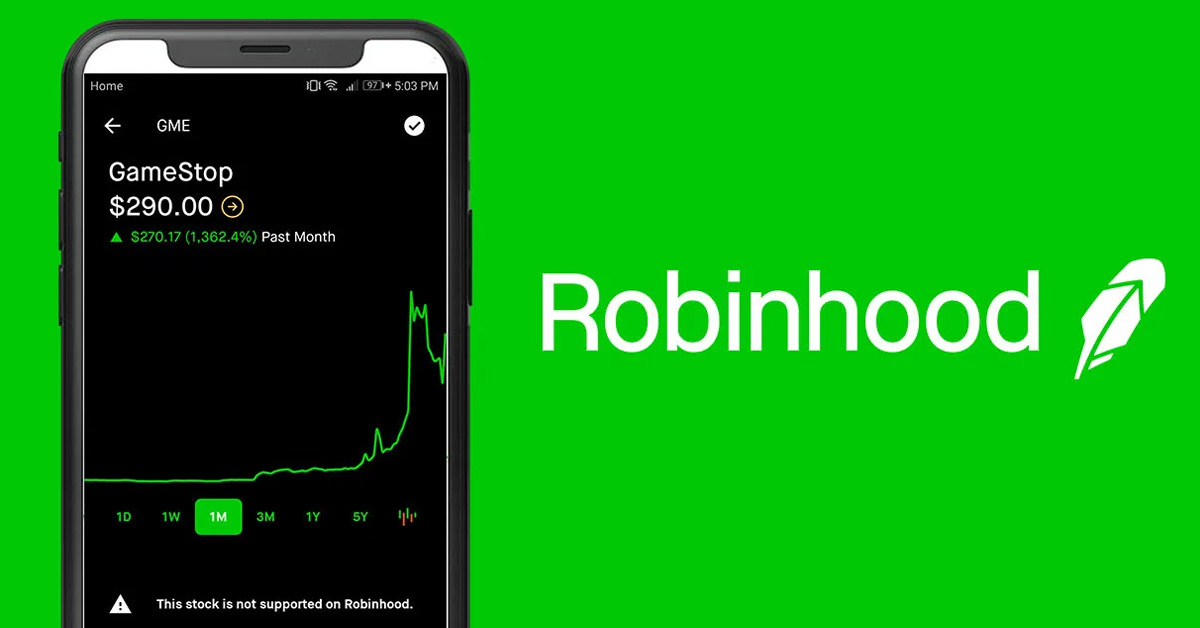Can You Short Sell Stocks on Robinhood?

The trading platform Robinhood has become popular with many investors because it puts powerful financial tools and access to the markets in the palms of its hands through its mobile app. Traders can buy and sell stocks and cryptocurrencies as well as receive breaking news and analysis on market trends. There are multiple buying and selling options, which allow users to optimize their portfolios through individual investment strategies. Can investors utilize short selling as part of their investment strategies on Robinhood?
It is not currently possible to short sell stocks on Robinhood. However, the service does offer two options for marginal trading, buying put options and inverse ETF’s.
While put options and inverse ETFs don’t work exactly the same as short selling, they are both methods of betting on the declining price of a stock or commodity. These methods are not as simple as a traditional short sell, but offer advantages and disadvantages of their own. Let’s look at how these types of marginal trades work.
Can you Short Sell Stocks on Robinhood?
It is not currently possible to short sell stocks on Robinhood. However, the service does offer two options for marginal trading, buying put options and inverse ETF’s. Robinhood is set up primarily for passive investment over the long and short term, meaning that investors on the platform typically buy and hold stocks, profiting from growth over time as opposed to short term market fluctuations.
While put options and inverse ETF’s aren’t exactly analogous to short selling, they are both methods of betting on the declining price of a stock or commodity. These methods are not as simple as a traditional short sell, but offer advantages and disadvantages of their own. Let’s look at how these types of marginal trades work.
Put Option Trading on Robinhood

Put options are time-sensitive securities that allow the trader to sell shares of a stock at a chosen price, also called the strike price, within a set timeframe. Like a short sell, this method of achieving a short position will allow a trader to make money on a falling stock price, however, put options differ from a simple short sell in that they require the trader to foresee how far the price will fall and at what point in time.
Put options can be used both as a conservative hedge, where one is attempting to protect the value of a portfolio against a falling stock price or as a speculative move, where one makes money from a stock losing value. Here’s how to buy put options on Robinhood.
How to Buy Put Options on Robinhood
After you have identified the stock which you would like to purchase, go to the home screen for that stock. Click on the “trade” button, which will then produce a button for “trade options.” This will take you to all of the available options for purchasing a stock.
On the following screen, you will see the options to define the terms of your put. First, you must choose your maturity date, which is the timeframe in which the stock must move to your desired price. You will then be asked to identify the “buy” and the “put.”
Once you select your maturity date, the Robinhood app will then automatically calculate the break-even point based on the strike point and maturity date. In order for you to make money on a put option, the price of the stock must fall to at least the break-even point by the maturity date. The final step is to select the size of your purchase and complete the transaction.
Robinhood will ask you how many contracts you would like to buy and what the maximum price you’re willing to pay for them will be. In this case, one contract is equal to one hundred shares. Robinhood will then calculate the price, and just like any other stock purchase on the platform, you’ll be asked to confirm your purchase by swiping up.
Inverse ETF Trading on Robinhood

While put options might be a smart choice for a more savvy investor, an easier option for someone looking to cover a short position on Robinhood would be to invest in an inverse ETF.
Just as a regular ETF, or exchange-traded fund, would cover a broad sector of the market such as real estate or tech stocks, inverse ETF’s also cover certain market sectors, only they look to make money when prices in these areas fall. You can think of an inverse ETF as being the exact opposite of a regular ETF. But why would anyone want to buy these types of funds considering that the general trend over time is for the market to go up?
There are a couple of reasons that inverse ETF’s might be attractive. The simplest would be that some world event is likely to drive prices down in a certain sector of the market. For example, perhaps a new administration is coming into power that has made fuel efficiency and movement towards electric cars a priority on the campaign trail.
You could reasonably predict that prices of ETF’s in the automotive sector might fall. In this case, purchasing an inverse ETF that covers short positions in this sector might be a way to take advantage of the opportunity.
Inverse ETF trading can also be attractive to more sophisticated investors who will sometimes use both a regular ETF and its inverse as a paired investment strategy. Using this strategy allows you to essentially make a profit whether stocks go up or down in a certain sector.
The sophisticated part is in getting the ratio between the ETF and the inverse ETF optimized for profit. This strategy is often employed during times of extreme market volatility to minimize exposure to risk. Here’s how to buy inverse ETF’s on Robinhood.
How to Buy Inverse ETF’s on Robinhood
The major advantage that inverse ETF’s have over put options is that they are much easier to purchase and require much less market prediction to be successful investments. Inverse ETF’s are purchased exactly the same way as any other stock or fund on Robinhood.
You simply click on the search icon to bring you to the browse screen. If you know the name of the inverse ETF you’re looking to purchase, type it in and go through the normal motions of defining how much you want to purchase and then confirming. If you don’t know which inverse ETF is right for you, or you want to browse through some different options, simply type in “inverse ETF.”
This will bring up all of the available options supported by Robinhood. You can then read descriptions of the funds and track their prices, much like you would for any other stock. When it comes time to sell your inverse ETF, the process works exactly the same as any other stock. Just click sell, define how much, and confirm. Also, as with any other stock or fund, Robinhood tracks the value of the fund over time so users can see how the fund has been trending.
What is the Best Way to “Short” a Stock?

The first step to short-selling any stock is to make sure you have a margin account set up with your broker or service and that you have the necessary permissions. All short sales are done on the margin, meaning that borrowing is involved.
Some brokerage services may offer short selling strictly as a premium service or for those investing above a certain threshold. If you are using a traditional stockbroker, simply instruct him or her on the particular stock you want to short, including the amount you want to trade and the price at which you want to cover the stock. The advantage of using a traditional broker is that they will essentially do the work for you, as well as be able to offer advice throughout the process. There are a number of apps that will allow short selling as well.
While Robinhood does not currently support short selling, there are options for making these trades without going through a traditional broker. Mobile apps such as Webull operate with much the same ease as Robinhood and allow users to feel the power of their investments in the palms of their hands.
Other platforms such as Firstrade, TD Ameritrade, Tradestation, Tradezero, and Charles Schwab offer software interfaces of varying complexity based on how sophisticated a trader is. While these platforms are typically more expensive and complicated to use than streamlined mobile services such as Robinhood and Webull, they do generally offer more sophisticated investment advice and information.
When Will Robinhood Allow Short Selling?
At this point, Robinhood has no plans to offer short selling options to its users. This is most likely due to the way that Robinhood is set up. Unlike other platforms such as TD Ameritrade or Charles Schwab, Robinhood isn’t actually a brokerage and therefore relies on another brokerage to support its trades.
Robinhood is really geared toward long and short-term passive investors, rather than day traders. This means that the app is designed to make it easy to buy and sell simple stocks and funds that you will keep in your portfolio for growth over time, rather than attempting to make quick profits from small fluctuations in stock prices. Due to this fundamental design, it seems unlikely that Robinhood will ever offer short selling on its platform.
Summary

Short selling, including put option trades and inverse ETF’s, is a way of profiting from stock or commodity which is losing value in the market. These can be powerful tools for investors when used as part of a larger investment strategy. While simple short sells are not available currently on Robinhood, users do have the ability to purchase put options or inverse ETF’s. These two methods allow Robinhood users to open their portfolios to more sophisticated types of investments, creating new financial opportunities.
